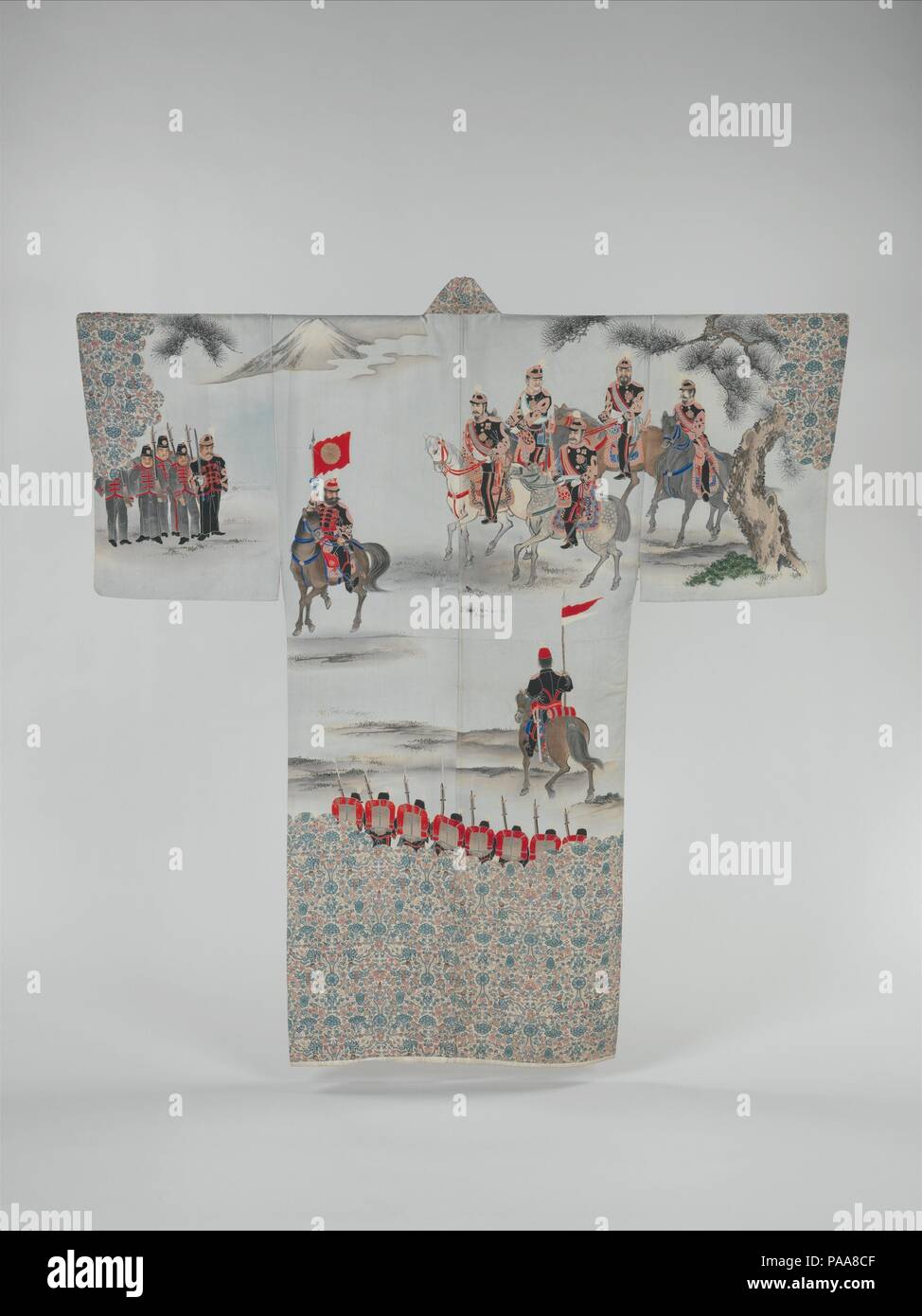Man's Under-Kimono (Nagajuban) with Scene of the Russo-Japanese War featuring General Nogi. Culture: Japan. Dimensions: Overall: 50 1/2 x 51 in. (128.3 x 129.5 cm). Date: early 20th century. A nagajuban is an informal robe often decorated with eye-catching designs. This piece may be a one-of-a-kind commemorative garment related to Japan's victory in the Russo-Japanese War of 1904-5. The scene refers to the lengthy Japanese siege of Port Arthur, an engagement lasting from August 1, 1904 to January 2, 1905, when the Russian general, Anatoly Stessel, surrendered to General Nogi Maresuke. After t

Image details
Contributor:
Album / Alamy Stock PhotoImage ID:
PAA8CFFile size:
39.1 MB (1 MB Compressed download)Releases:
Model - no | Property - noDo I need a release?Dimensions:
3200 x 4268 px | 27.1 x 36.1 cm | 10.7 x 14.2 inches | 300dpiPhotographer:
AlbumMore information:
This image could have imperfections as it’s either historical or reportage.
Man's Under-Kimono (Nagajuban) with Scene of the Russo-Japanese War featuring General Nogi. Culture: Japan. Dimensions: Overall: 50 1/2 x 51 in. (128.3 x 129.5 cm). Date: early 20th century. A nagajuban is an informal robe often decorated with eye-catching designs. This piece may be a one-of-a-kind commemorative garment related to Japan's victory in the Russo-Japanese War of 1904-5. The scene refers to the lengthy Japanese siege of Port Arthur, an engagement lasting from August 1, 1904 to January 2, 1905, when the Russian general, Anatoly Stessel, surrendered to General Nogi Maresuke. After the war, General Nogi was celebrated as a national hero. Some scholars see such commemorative clothing as precursors of the more overtly propagandistic Japanese garments of the 1930s and World War II years. Museum: Metropolitan Museum of Art, New York, USA.